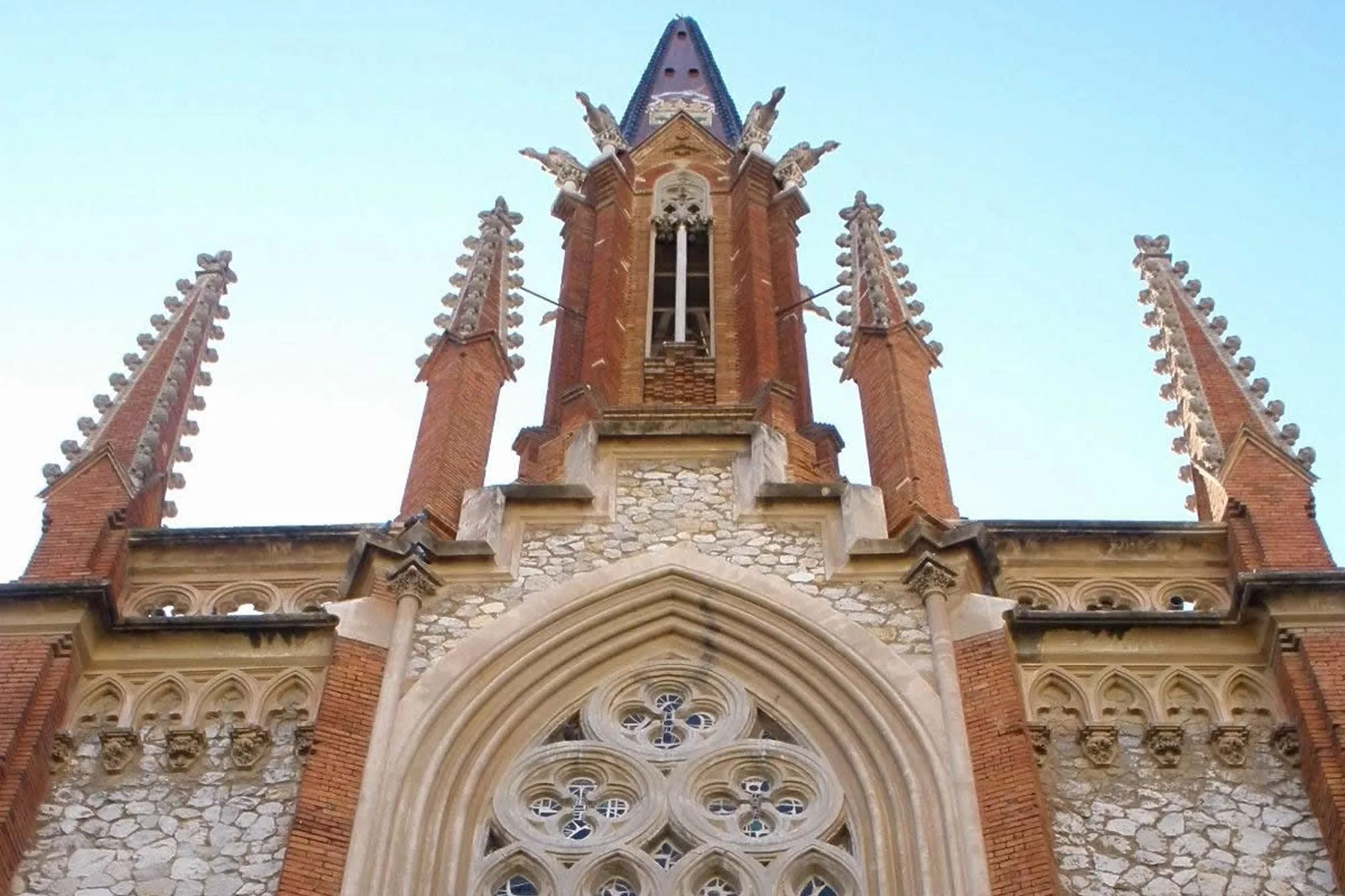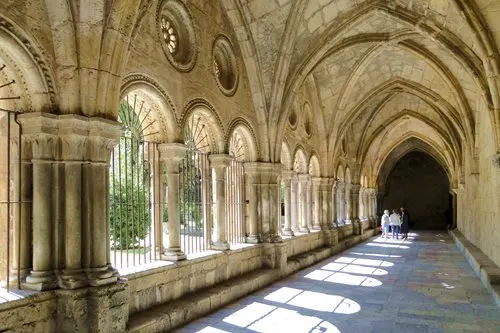
Cookie settings
We use our own and third-party cookies in order to offer our services, display videos, obtain statistics and offer personalized advertising.
For more information, please read our cookies policy.

The first stone of the convent was laid in 1896, on the land which would be occupied by the high altar. In the shape of a parallelogram, it had a ground floor housing a patio which was a cloister, and four stories when initially it was planned to have three (plus the ground floor), conceived by architect Pau Monguió i Segura. The walls were built from masonry.
But there are two very special architectural features in the building thath make it even more unique: the spire which tops of the façade and the lantern in the shrine that Josep María Jujol raised in 1918. the façade was finished to Neo-Gothic criteria, a notable feature being the spire that became the bell-tower. The lantern in the shrine that presided over the lower altar adedicated to the Mother of God of Carmen is the only element that has survived all the historical misfortunes to which the convent has been subjected. Underneath this fragile element stood the altar and the treasure of the Moder of God, an element much-loved by the people of Tarragona of which nothing remains.
The shrine, which was built in 1918, takes the form of a spire resting on a polygonal base formed by pointed apertures finishing in columns protecting it. Many young people from the city were educated at the convent but building will always be remembered because it was here that famous Aigua del Carme (medicine) was manufactured from 1909 through to the 1980s.
Built: XIX-XX Centuries
Author: Jose María Jujol
Style: Modernist
Category: Religious
Type: Chapel
Address
Carrer de l’Assalt, 11, 43003 TarragonaOpening times
Prices
If you see any mistakes or want to add anything to this information, please contact us.

